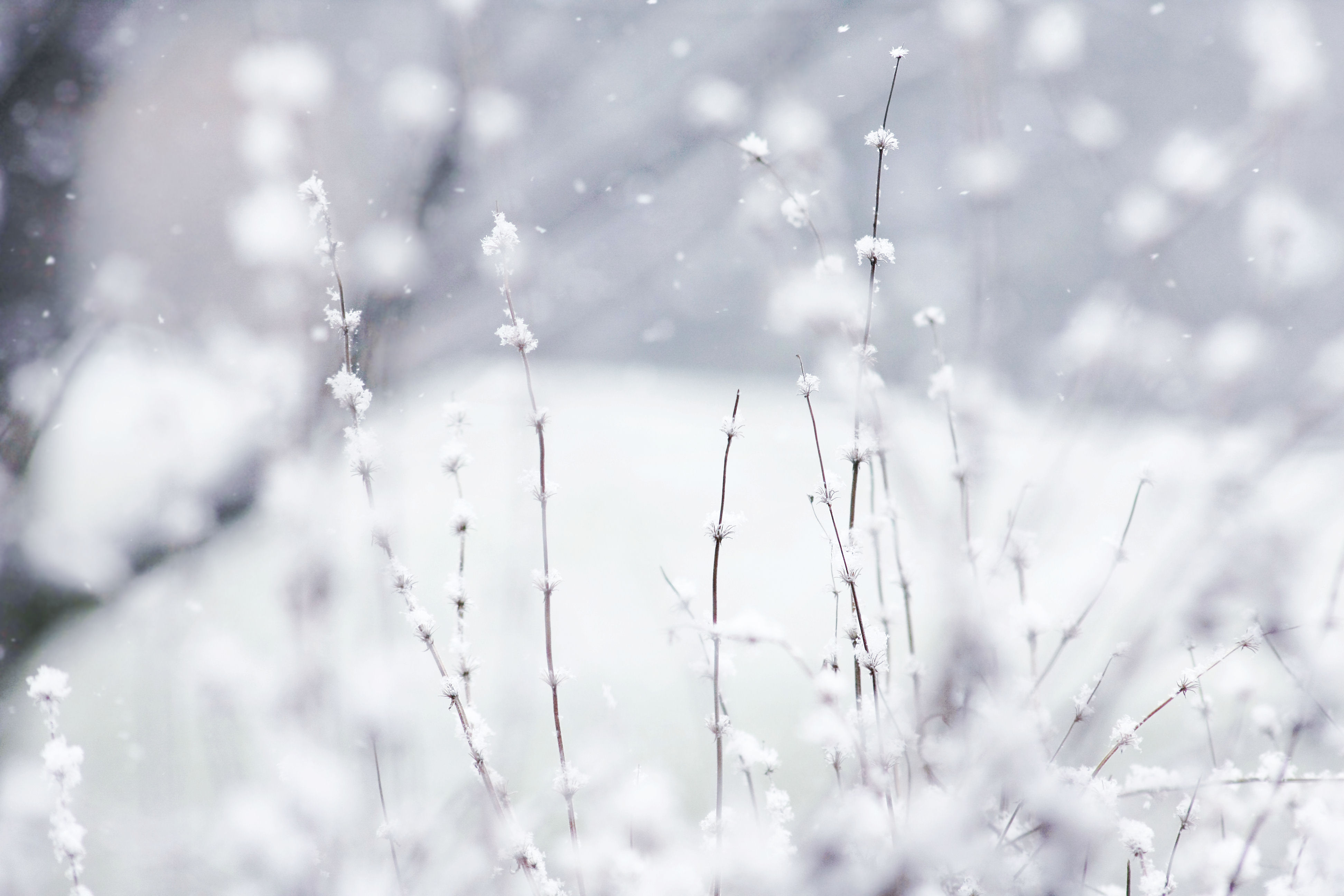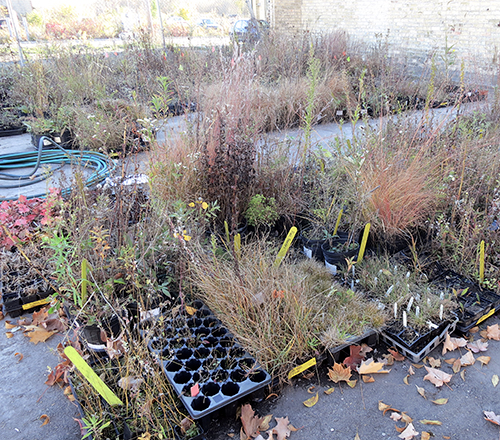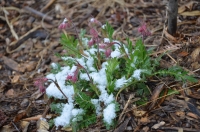I wrote in a previous blog post about what happens inside the leaf of a tree as it changes colors in the fall, but that’s just the beginning of the story!
The Science Inside the Cells
When winter approaches, days get shorter and nights get longer. A decrease in the hours of daylight causes a decrease in overall plant metabolism. In plants, metabolism is the chemical process of turning the energy from sunlight into sugars the plant needs to live. The plant senses this change in metabolism and starts to acclimate itself for the coming winter. Enzyme activity within the leaf goes up significantly; these enzymes are working to break down leaves into their essential elements to be stored over winter. Herbaceous plants store carbohydrates and nutrients in their roots; they use these nutrients to survive through the winter when photosynthesis is no longer an option, and to make new leaves in the spring when they warm up again.
 If a cell within a plant that had not undergone any winter preparation were to freeze solid, the water within the cell would turn to ice and expand, breaking open the cell wall and killing that cell. So plant cells undergo major preparation to protect themselves from that fate. They pump most of the water out of each cell into the spaces between cells so that only very small amounts of water remain. The water left within the cell is totally pure (nothing but hydrogen and oxygen).
If a cell within a plant that had not undergone any winter preparation were to freeze solid, the water within the cell would turn to ice and expand, breaking open the cell wall and killing that cell. So plant cells undergo major preparation to protect themselves from that fate. They pump most of the water out of each cell into the spaces between cells so that only very small amounts of water remain. The water left within the cell is totally pure (nothing but hydrogen and oxygen).
Here’s the crazy cool part: the water that is still within the cell often doesn’t freeze, even when temperatures outside are significantly lower than freezing because pure water can stay liquid even down to -39 degrees Celsius! This phenomenon is called supercooling. Each pocket of water is so very tiny and pure that it stays liquid through freezing temperatures. Here’s why: ice forms around things called nucleators, which are little molecules other than water that ice grabs onto while it forms. Pure water (which we already know is what is left inside the plant), does not contain any nucleators, and so it stays liquid. The water that the plant has pumped into the space between the cell walls often does contain nucleators, so it does freeze sometimes. Each individual cell wall can collapse like an accordion, so that if the water contained between cells does freeze it can expand without damaging the cell wall.
Prepping Plants in the Ground
A blanket of snow acts as a great insulator, keeping temperatures at the ground cold but consistent. A plant’s roots can endure constant freezing temperatures without too much damage, but repeated fluctuation in temperature can really hurt the plant. Repeated freezing and thawing of the ground around the plant can push the plant up out of the ground, leaving its roots exposed. In addition, warm sunny days can actually stimulate cellular activity within the plant. Then, at night, when temperatures plummet again, the plant freezes without having gone through its supercooling process again.
For that reason, when overwintering a native plant that is accustomed to our climate, it is not important to keep the plant from freezing. What is important is keeping the plant frozen at a relatively constant temperature all the way through the winter until the next growing season starts. To do this, we can cover the roots of the plants with a thick layer of mulch such as straw, woodchips, or fallen leaves to simulate a nice think blanket of insulating snow. This gives an added bonus: it puts a barrier in between the roots of our plant and any hungry rodents that might be prowling around!
Prepping Plants in Pots
 They might not look it, but the flats of plants pictured at left are alive and healthy! These plants have already begun their own process of getting ready for the winter, and currently the land stewards at the Urban Ecology Center are hard at work doing our part to help them. To do this, we arrange the flats of plants on a flat surface. We then make sure they are well watered so that they won’t dry out (that’s right, plants can even dry out, or desiccate, in the winter). After the plants are frozen, right around Thanksgiving, we cover the flats with a layer of burlap or other cloth netting. This provides a small amount of air around the plants so that they do not rot, and it also makes them easier to uncover in the spring. Then we lay down a thick layer of woodchips over the burlap. When I say we lay down a “thick layer,” I really mean it! We lay down a layer of woodchips at least six inches thick over the plants to keep them at a consistent temperature throughout the dormant season. People are often really surprised at the sheer volume of woodchips that need to be used to properly overwinter plants.
They might not look it, but the flats of plants pictured at left are alive and healthy! These plants have already begun their own process of getting ready for the winter, and currently the land stewards at the Urban Ecology Center are hard at work doing our part to help them. To do this, we arrange the flats of plants on a flat surface. We then make sure they are well watered so that they won’t dry out (that’s right, plants can even dry out, or desiccate, in the winter). After the plants are frozen, right around Thanksgiving, we cover the flats with a layer of burlap or other cloth netting. This provides a small amount of air around the plants so that they do not rot, and it also makes them easier to uncover in the spring. Then we lay down a thick layer of woodchips over the burlap. When I say we lay down a “thick layer,” I really mean it! We lay down a layer of woodchips at least six inches thick over the plants to keep them at a consistent temperature throughout the dormant season. People are often really surprised at the sheer volume of woodchips that need to be used to properly overwinter plants.
Urban Ecology Center land stewards have used this technique for the past 8 years, and we’ve had great success. In spring, when we uncover our plants, we find that less than 10% of them have succumbed to cold, desiccation, rodents!
How You Can Help
Have you been thinking about getting outside and volunteering? Well now is the perfect time!
Over the next couple of weeks, Urban Ecology Center land stewards will be moving, weeding, and organizing our flats of plants, and moving burlap and woodchips into place so that we can cover the plants in late November. This is a huge task, and will require a lot of effort and people-power to accomplish.
Check out our online calendar of volunteer times to find a session that fits your scheudle and sign up. See you outside!





